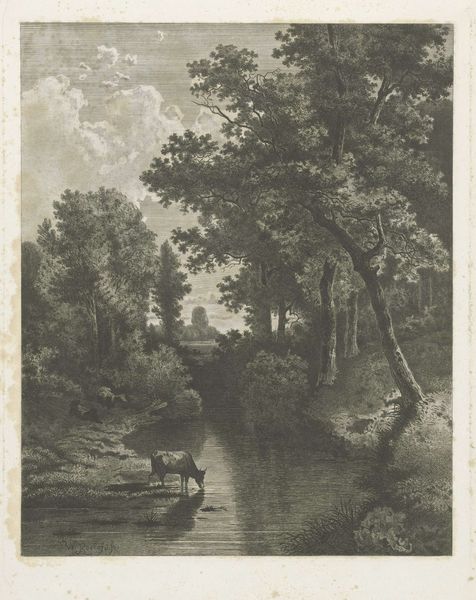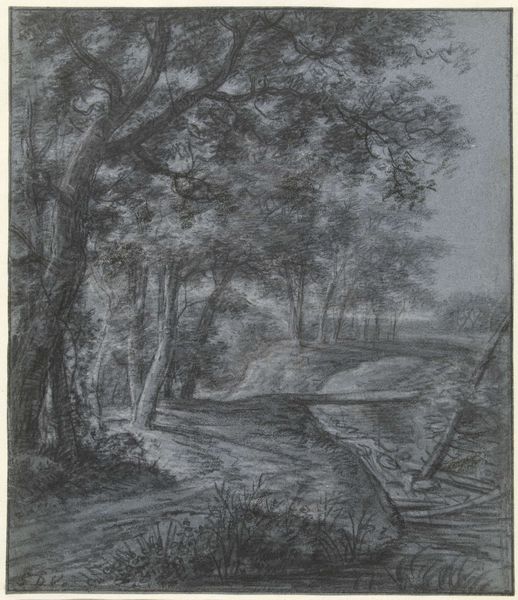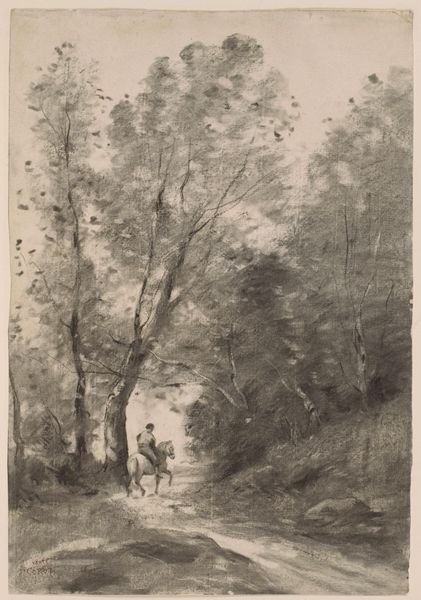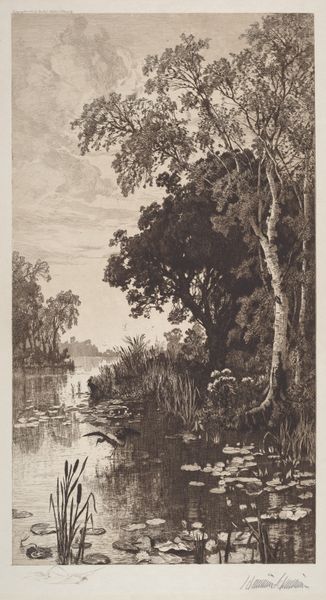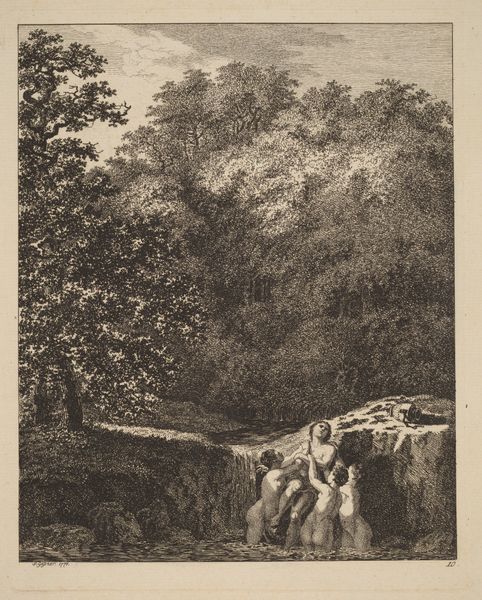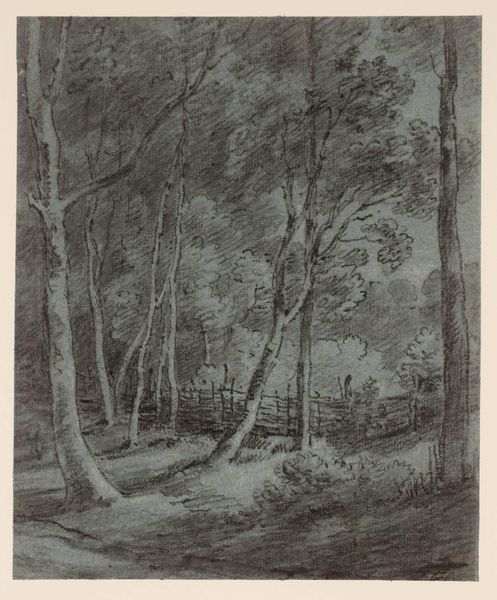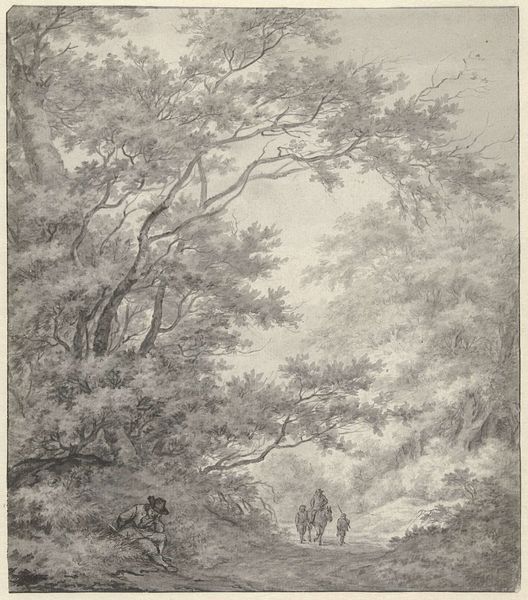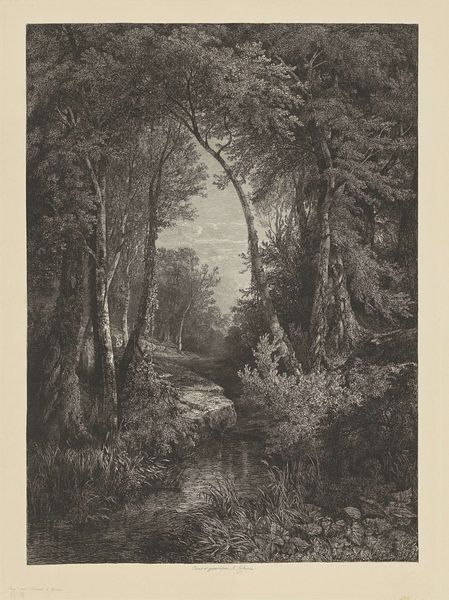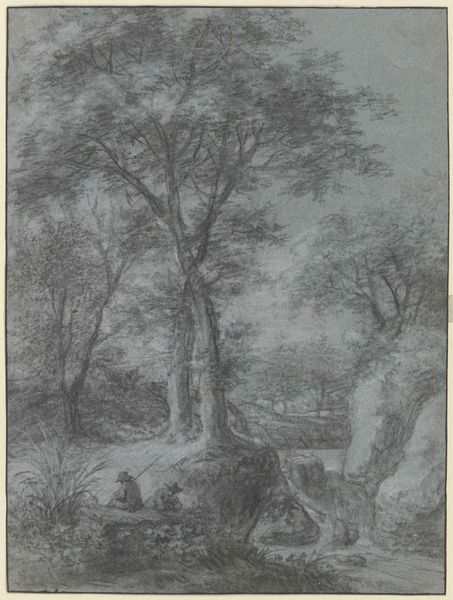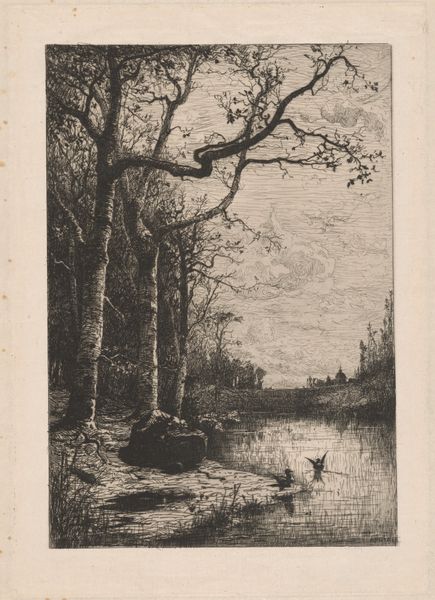
engraving
#
old engraving style
#
landscape
#
genre-painting
#
engraving
#
realism
Dimensions: height 442 mm, width 360 mm
Copyright: Rijks Museum: Open Domain
Jan van Lokhorst made this landscape with cows near a stream in the late 19th century using etching. This intaglio printmaking process involves using acid to cut lines into a metal plate. Lokhorst would have covered a copper or zinc plate with a waxy, acid-resistant ground, then scratched away the ground with a needle to expose the metal. The plate was then immersed in acid, which bit into the exposed lines. For deeper, darker lines, the process was repeated. Note the incredible detail achieved through the etching technique, from the foliage and trees to the reflections in the water. Consider the labor-intensive process involved in creating such a detailed image, line by line, and the way the image, multiplied by the printing press, found its way into a growing middle-class art market. This speaks to the democratizing power of printmaking, making art accessible to a wider audience in an era of increasing industrialization and social change.
Comments
No comments
Be the first to comment and join the conversation on the ultimate creative platform.
